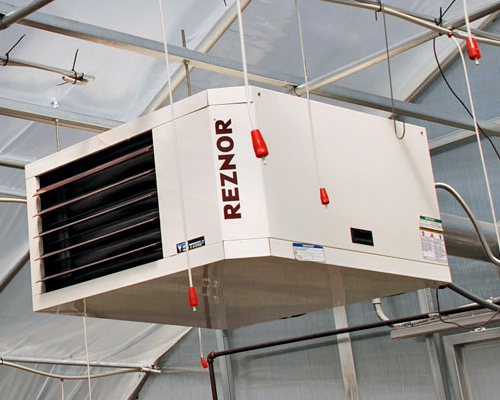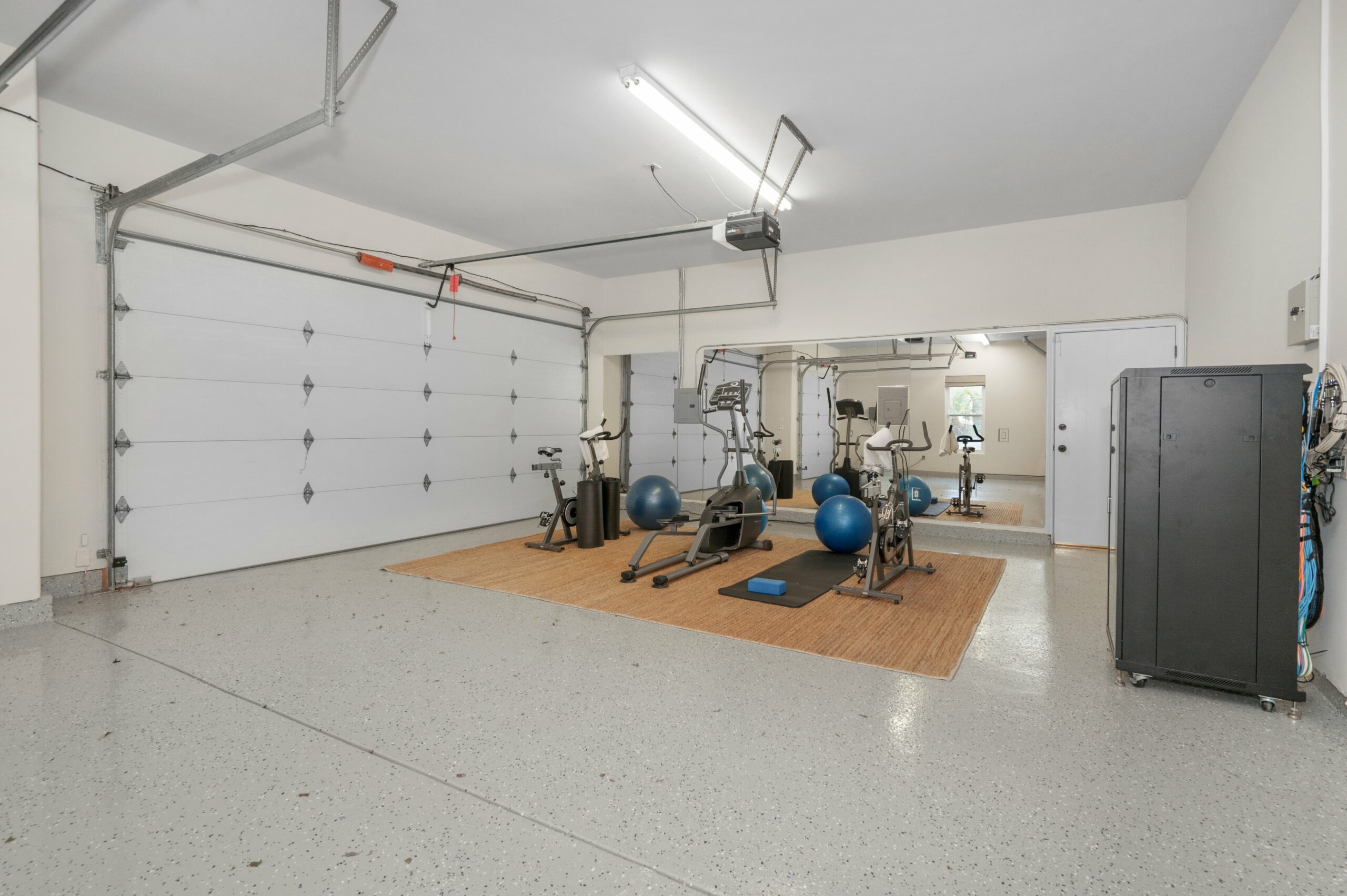Gas Unit Heaters
Warmth for Any Workspace
If you are looking for a dependable and affordable way to heat your garage or workshop this winter, call the experts at DK Heating and Sons. We offer a full line of Reznor unit heaters that are compact, highly efficient, safe, and quiet.
Products
Indoor Air Quality
Heating Services
Cooling Services
Gas Unit Heaters

High-Efficiency Unit Heater
Reznor Edge
- Up to 93% gas fuel efficiency
- Low electrical usage
- Heating range from 30 – 1,200 MBH
- CFM ranges from 380 – 16,750
- Available for 60 Hz or 50 Hz operation
- Propane conversion kit available
- Vertical or horizontal venting
- Quiet performance

Why Heat Your Garage?
- Keep you and your children warm while transferring from home to the car.
- Reduce car engine wear and tear caused by cold starts.
- Maintain your garage at a comfortable working/living temperature or just above freezing.
- Prevent the freezing of pipes that may be located in uninsulated garage walls.
- Up to 97.3% gas efficiency (AFUE)
- ComfortLinkTM II communicating capability
- Modulating gas valve
- Stainless steel primary and secondary heat exchangers
- Ultra-efficient Vortica™ II variable speed blower, offers consistent flow of warm, comfortable air with quiet operation
- Requires XL284 Wi-Fi Thermostat
- Lifetime limited heat exchanger warranty with proper registration
- 10-year parts limited warranty with proper registration
Getting to Know Gas Unit Heaters
90%+ Furnaces
A 90% plus furnace has two heat exchangers (a primary and a secondary) and are commonly called “condensing” furnaces. These furnaces are capable of extracting at least 92% of the heat from combustion and transferring it into your home. The term “90% plus” means just that, the furnace’s efficiency rating is above 90%. For each $1.00 of natural gas that the furnace uses, at least 92% (or $.92) is used to actually heat your home and the remaining 8% (or $.08) is vented to the outside through the sidewall or roof of your home using a PVC plastic pipe.
80% Furnaces
An 80% efficiency furnace has only one (or primary) heat exchanger and extracts at least 80% of the energy from the combustion process and transferring it into your home. Simply stated, for each $1.00 of natural gas or propane that is used by the furnace, at least 80% (or $.80) is actually used to heat your home. The remaining 20% (or $.20) is vented out through your chimney or flue pipe.
Modulating
Modulating gas furnaces are very high efficiency furnaces, usually 95% and higher. These models also use computer technology along with special gas valves to control the burner output. The burner levels on these models operate at varying levels hence the term “modulating”. When the room thermostat calls for heat, the furnace fires and starts operating at a “medium” level. The furnace operates at this level for a short period and as the temperature gets closer to the set point, the furnace “modulates” to the lowest level until the thermostat is satisfied. In cases where the thermostat is set significantly higher than the room temperature or the heat demand is high, the furnace will operate on the highest stage in order to warm the home up as fast as possible.
Two-Stage
Two-stage gas furnaces are available in both 80% and 90% efficiencies. However, two-stage furnaces use a microprocessor along with a two-stage gas valve to control the burners at a high or low rate, depending on the heat demand. When the outside temperatures are moderate, the burners operate at a lower, more efficient rate. If the outside temperatures are very cold, then the furnace will operate at the higher rate in order to keep up with the heating demand.
Single-Stage
Single-stage gas furnaces are available in both 80% and 90% efficiencies. The term “single-stage” means simply that the furnace’s burners fire at one fixed heating level. When the thermostat tells the furnace to heat, the gas valve opens and the burner flame ignites. When the thermostat is satisfied, the burners shut-off.
ECM Variable-Speed Motor
Unlike conventional PSC motors, which are designed to run at one speed, an ECM variable-speed motor can run at a wide range of speeds to precisely deliver the exact airflow required to heat or cool the home to the temperature called for by the thermostat. Typically, an ECM motor will turn on and gradually increase the speed of the fan as more air is called for, decreasing the speed as the target temperature is close to being met.
Additionally, variable-speed motors are much quieter than conventional motors and improve air circulation which results in reduced temperature swings, greater indoor comfort and significant energy savings. Unlike conventional PSC motors, which are designed to run at 1 speed, an ECM variable-speed motor can run at a wide range of speeds to precisely deliver the exact airflow required to heat or cool the home to the temperature called for by the thermostat. Typically, an ECM motor will turn on and gradually increase the speed of the fan as more air is called for, decreasing the speed as the target temperature is close to being met. Additionally, variable-speed motors are much quieter than conventional motors and improve air circulation, which results in reduced temperature swings, greater indoor comfort, and significant energy savings.

Just around the corner
Where We
Service
- Edgewood
- Fairport harbor
- Gates Mills
- Geneva
- Grand River
- Hambden
- Harpersfield
- Hartsgrove
- Highland Heights
- Jefferson
- Huntsburg
- Kirtland
- kirtland hills
- madison
- Mayfield Heights
- Mentor
- Mentor on-the-Lake
- Middlefield
- Montville
- Novelty
- Orwell
- painesville
- perry
- rock creek
- Saybrook
- South Madison
- Thompson
- Timberlake
- unionville
- Waite Hill
- Wickliffe
- willoughby
- willowick
- Windsor

